|
Do you have a thing for the finished look of freshly mulched flower beds? You’re not alone. Each year homeowners spend hundreds of dollars on mulch. That’s not all - you need to account for what you might pay for the labor to spread it and clean up. An ideal mulch product mimics nature by covering plants with organic matter that provides nutrients and beneficial microorganisms to the soil. You probably use mulch to suppress weeds, but mulch does much more: it retains moisture, controls erosion, and moderates fluctuating soil temperatures in our plant’s root zones. When properly applied, at the right time and depth, it naturally enhances the soil and plants with the gradual decomposition of organic matter. A thin layer of about 2 inches is all you need to achieve these benefits, plus add uniform color to your garden. To save you time and money, avoid these ten common mistakes: 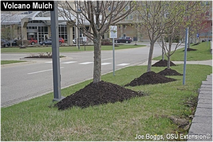 1. Volcano Mulch: This looks exactly like it sounds—a deep pile around the base of a tree trunk. This type of mulching causes the lower trunk to become waterlogged and eventually compacts and interferes with oxygen reaching tree root cells. Volcano mulching decays the tree’s bark and harbors rodents that chew on the base of the tree. Better choice: Keep mulch away from the base of trees. (PSU Mulch Fact Sheet)
7. Cocoa bean mulch smells good and is organic, but is toxic to dogs. Better choice: Use another type of mulch.
9. Using chemicals to eliminate weeds and grass for future planting beds. Chemicals harm the environment, our bodies and soil. Better choice: Lay down newspaper under soil and mulch to kill grass and weeds.
Mulch Quality
Dyed Mulch
Buying Mulch
When to Apply Mulch According to the Ohio State University Extension Office, the first round of mulch is normally applied in spring after the soil is warmed and has dried up somewhat from winter rain and snow. This is normally in the middle or late spring season—perhaps early May. If there is more rainfall than usual, or temperatures stay cool longer than usual, it may be best to delay mulching even until late May or early June. Some gardeners or landscapers may choose to apply another layer of bulk mulch in fall as well. This is often done when growing annuals or fall-planted bulbs as it will help protect against the cold of winter. Some like to mix compost into the mulch and a 1:4 ratio is good. However, it may be better to mix the compost into the top layer of soil, then mulch. This way, you are amending the soil, not the mulch. Often weed seeds develop in the mulch and the mulch breaks down faster when there is manure mixed in. By applying compost or manure under the mulch, you may be able to delay mulching to every two years. Wood Mulch vs. Rock Mulch (Unsponsored Information from Davey) PROS
CONS
VERDICT: Mulching your garden reaps benefits throughout the growing season. But what you use makes all the difference. Seek out a local supplier. Ask about the ingredients of their mulch. When buying bagged mulch, look for the MSC product certification. Never buy dyed mulch and never volcano mulch. And finally, remember that organic mulch is overall better than stone. But stone is better than no mulch at all.
3/2/2021 03:37:28 pm
Thanks for explaining that putting too much mulch around a tree will prevent ventilation and lead to decay. My sister mentioned she's interested in applying mulch in her flowerbeds and around her trees this spring. Maybe I'll encourage her to hire lawn service for the mulching to avoid common mistakes like you described! 6/21/2021 09:27:46 am
Thanks for the tip to buy from someone who has manure and shredded bark in their mulch. I don't know if I am going to find someone who has that near me though. So maybe I can just collect all the ingredients and then combine them myself. Comments are closed.
|
Thank you for finding us! Holly and I have collaborated to bring you informative, fun, and seasonal garden inspiration blogs.
Subscribe to receive our blogs on the 1st and 15th of the month--Gwen Follow my landscape & garden design Pinterest Page to see more pics, inspiration and Gwen's home garden journey!
AuthorsGwen Wisniewski: Landscape and Garden Designer. Contact me. Let me help you integrate these garden inspirations. Choose the links below to find out more about my landscape design service or to make an appointment. |
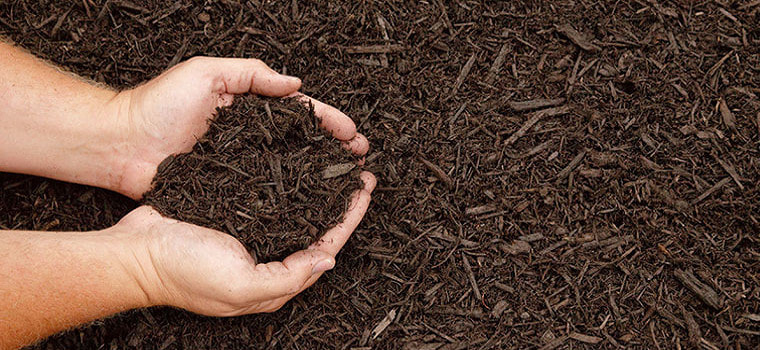
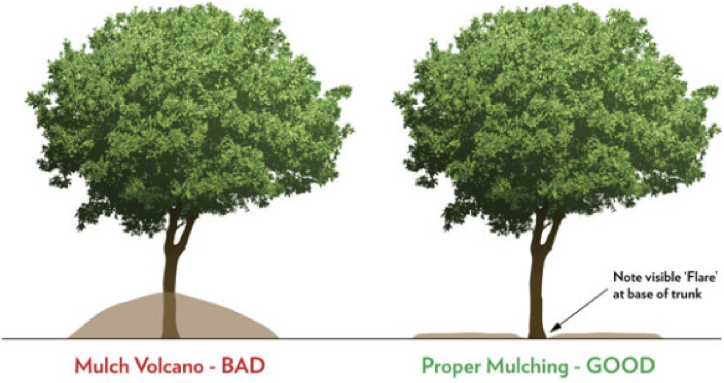

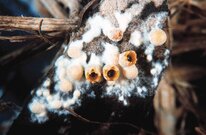
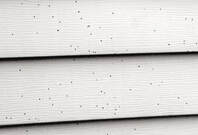
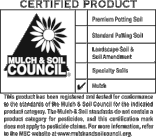
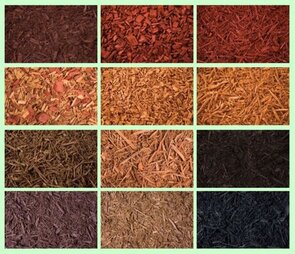


 RSS Feed
RSS Feed